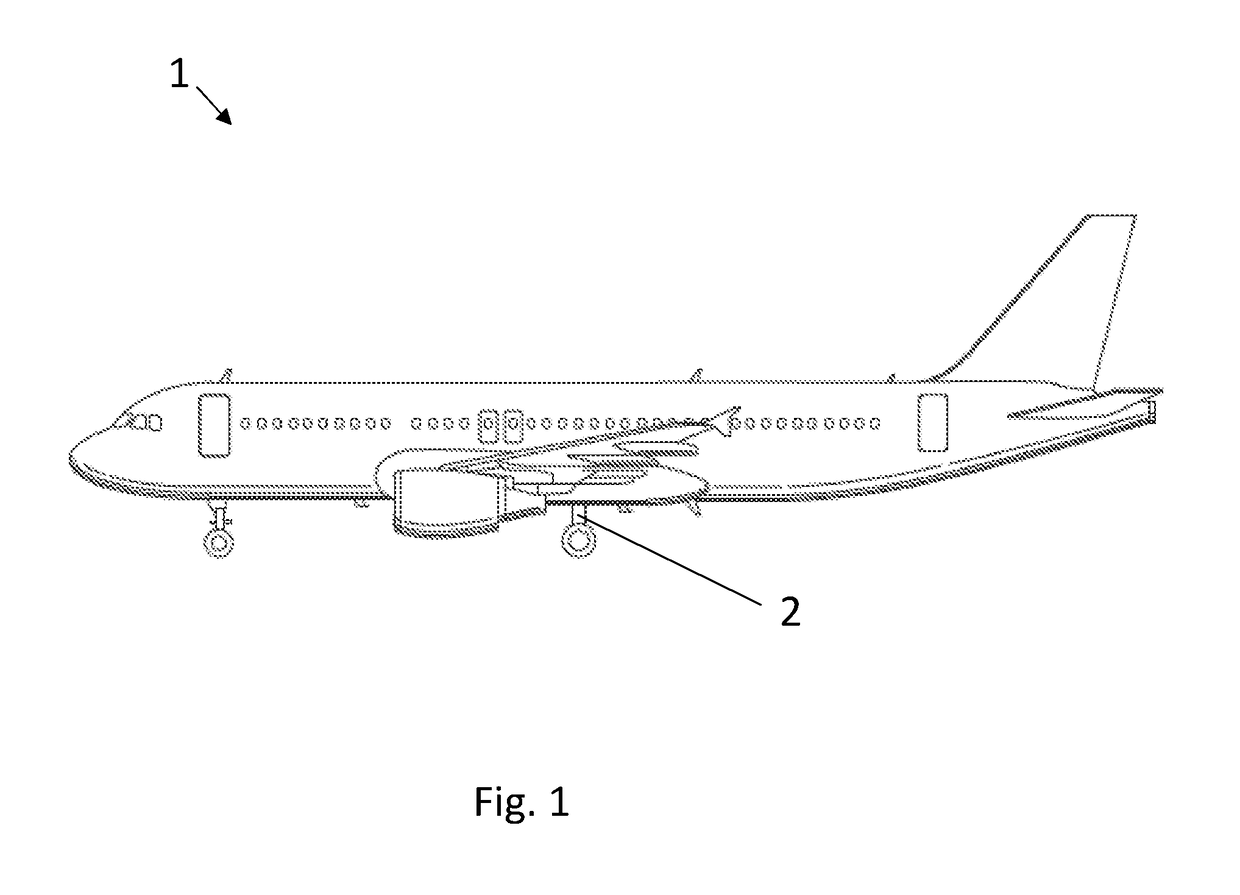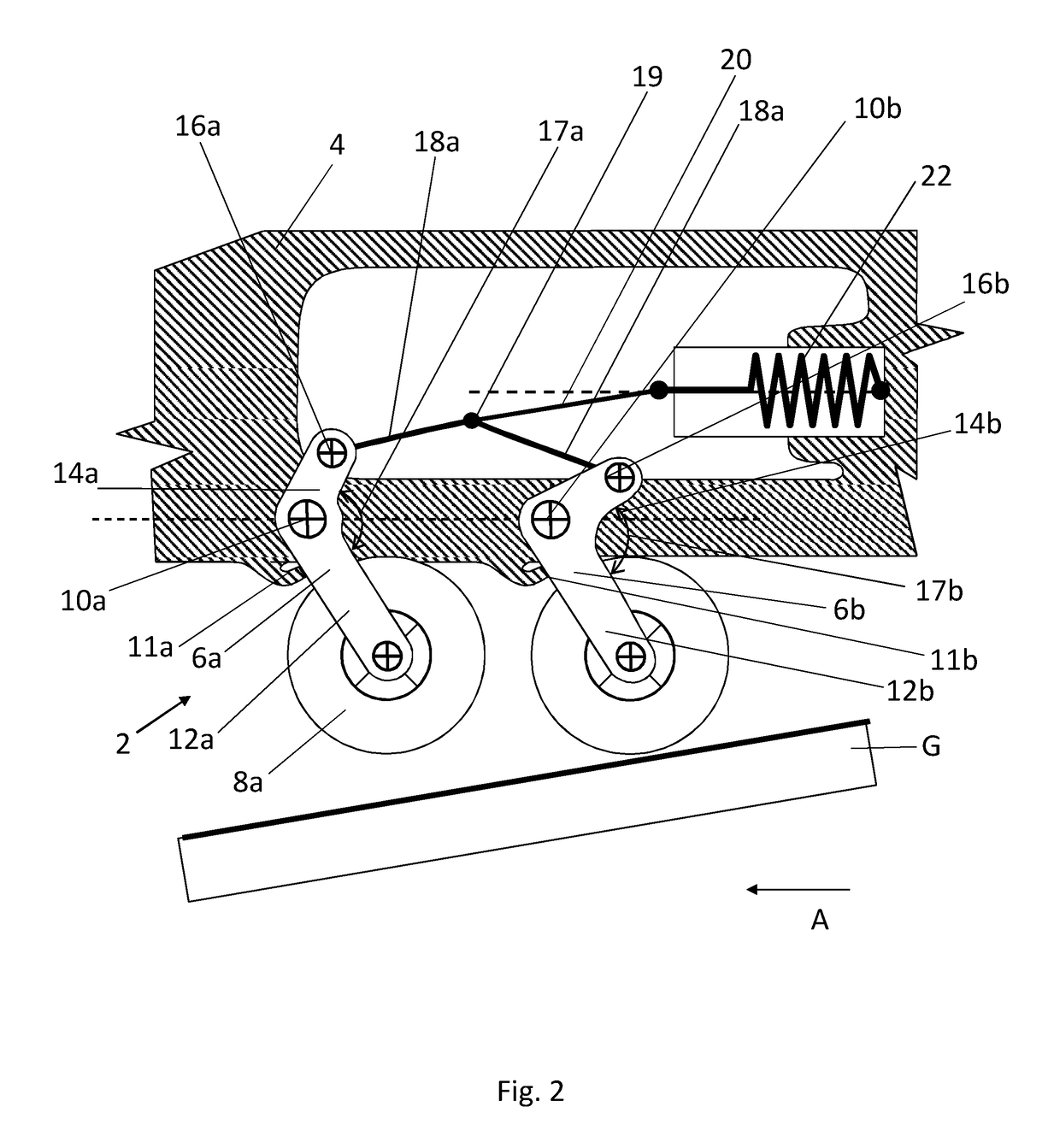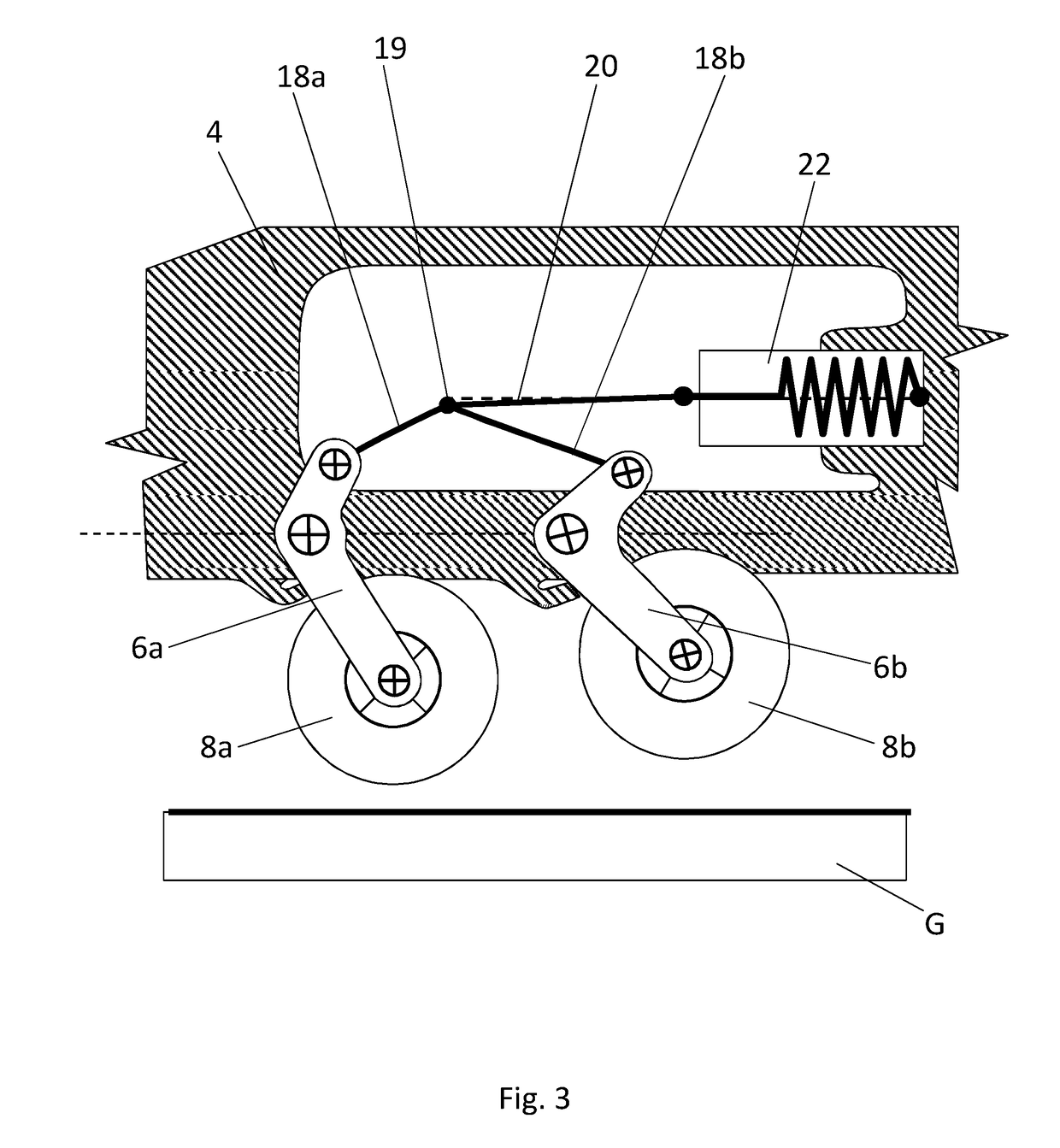Landing gear
- Summary
- Abstract
- Description
- Claims
- Application Information
AI Technical Summary
Benefits of technology
Problems solved by technology
Method used
Image
Examples
Embodiment Construction
[0050]FIG. 1 shows an aircraft 1 comprising a main landing gear 2 in accordance with a first example embodiment of the invention.
[0051]FIG. 2 shows a close up and schematic view of part of the airframe 4 and the landing gear 2 of the aircraft 1 of the first example embodiment immediately before the aircraft 1 contacts the ground, which is labelled G in FIG. 2. The forward direction of travel of the aircraft 1 is indicated with an arrow labelled A in FIG. 2. The arrow A points to the left in FIG. 2. The landing gear 2 comprises a first arm 6a mounted on a pivot 10a. A first part 12a of the arm 6a extends downwards and rearward (towards the right of FIG. 2) between the pivot 10a and a front wheel 8a. A second part 14a of the arm extends away from the pivot 10a, upwards and to the right of FIG. 2. An included link angle 17a may be defined between the two parts 12a, 14a. A link 18a is connected to the distal end of the second part 14a of the first arm 6a via a pivot 16a. The front of th...
PUM
 Login to View More
Login to View More Abstract
Description
Claims
Application Information
 Login to View More
Login to View More - R&D
- Intellectual Property
- Life Sciences
- Materials
- Tech Scout
- Unparalleled Data Quality
- Higher Quality Content
- 60% Fewer Hallucinations
Browse by: Latest US Patents, China's latest patents, Technical Efficacy Thesaurus, Application Domain, Technology Topic, Popular Technical Reports.
© 2025 PatSnap. All rights reserved.Legal|Privacy policy|Modern Slavery Act Transparency Statement|Sitemap|About US| Contact US: help@patsnap.com



